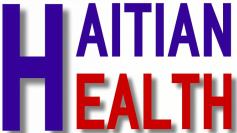Relying on the medical records of Haitians at a community health center in Little Haiti, Bokman et al. [3] discovered a total number of 939 Haitians who were screened for glaucoma during the period going from October 2011 to October 2013. Out of all these participants to the eye screening program, 750 Haitians benefited from this medical service for the first time. They were 18 years of age and older and had no prior diagnosis or signs of glaucoma. The data from the medical records of these 750 Haitians revealed that they were on average aged 51 and in slight majority female (55.2%) compared to the male (44.8%). In their calculations, 25.5% (n= 191) of this group of 750 Haitians had signs of glaucoma such as elevated intraocular pressure, also called high pressure in the eye (≥ 24 mmHG) and an increased cup to disk ratio (≥ 0.7). An increased cup to disk ratio meant that the optic cup or opening in the back of the eye widened. This cup or opening is where the fibers of the optic nerve or vision nerve join together to go to the brain. The size of the optic cup becomes as big as the size of the optic disk or area in the eyes where the fibers of the optic nerve are rooted. When comparing the Haitians with signs of glaucoma and their socio-economic statuses, the data showed that they were more likely to be older, lack insurance, and have high intraocular pressure. According to the researchers, the high prevalence (25.5%) of signs of glaucoma in this population might be due to several reasons. Included in their list is the fact that in Florida, there is a high number of undocumented Haitians who may be reluctant to seek preventative care due to their immigration status. Thus, the need is to reach out to more members of this ethnic group so that they can get appropriately screened for this condition. News Update (May 2016): Glaucoma is more prevalent among Americans categorized as Non-Hispanic Blacks. More than 50% of Americans diagnosed with glaucoma were unaware that they were living with this health condition. [4] References 1. Tham, Y. C., Li, X., Wong, T. Y., Quigley, H. A., Aung, T., & Cheng, C. Y. (2014). Global prevalence of glaucoma and projections of glaucoma burden through 2040: a systematic review and meta-analysis. Ophthalmology, 121(11), 2081-2090. doi: 10.1016/j.ophtha.2014.05.013 2. Duong, H. V. Q., Westfield, K. C., Jones, L. S., & Mitchell, J. (2012). A survey of ocular diseases in an isolated rural Haitian community: A retrospective evaluation. Journal of the National Medical Association, 104(11/12), 536. 3. Bokman, C. L., Pasquale, L. R., Parrish II, R. K., & Lee, R. K. (2014). Glaucoma Screening in the Haitian Afro-Caribbean Population of South Florida. PloS one, 9(12), e115942. doi: 10.1371/journal.pone.0115942 4. Gupta, P., Zhao, D., Guallar, E., Ko, F., Boland, M. V., & Friedman, D. S. (2016). Prevalence of Glaucoma in the United States: The 2005–2008 National Health and Nutrition Examination Survey. Investigative Ophthalmology & Visual Science, 57(6), 2577-2585. doi: 10.1167/iovs.15-18469
2 Comments
Mickelder Kercy
5/19/2022 08:49:07 am
I am glad you enjoyed it. Thanks for visiting this blog. Please share it with your network or someone who might benefit from it.
Reply
Leave a Reply. |
Mickelder Kercy, M.D. M.S.I learned about the art and science of medicine and was introduced to the community and population-based aspects of public health at the Université Notre Dame d'Haiti. My early practical interventions in the field of public health during medical residency in Haiti fostered my interest in pursuing additional academic training in public health. At Columbia University in the City of New York, I specialized in Public Health with a minor focus on Community Health Education. My special interest is in non-communicable chronic diseases, and the social-ecological approach to health education and promotion in secular and faith-based communities. Archives
October 2017
Categories
All
To subscribe to our blog and receive notifications of new posts by email
|




 RSS Feed
RSS Feed
